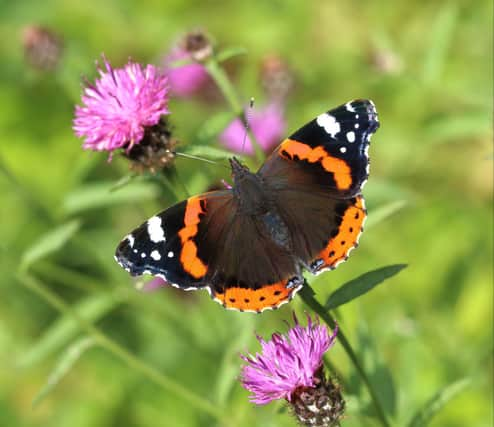Red Admiral butterfly had its best year ever in Scotland last year


The Red Admiral butterfly had its best year ever in Scotland last year, as experts described 2023 as "a phenomenal year" for the species.
The colourful insect increased in abundance by 224 per cent in 2023 compared with 2022, which was already its ninth best year since records began 44 years ago.
Advertisement
Hide AdAdvertisement
Hide AdThe latest results from the annual UK Butterfly Monitoring Scheme (UKBMS) published today, show Red Admirals have now increased by nearly 1000 per cent north of the Border since 1980.
Dr Richard Fox, Head of Science at the wildlife charity Butterfly Conservation, said: "The Red Admiral had a spectacularly good year in Scotland.
"The species had a good year in 2022 but it had a phenomenal year last year, and this is part of a long term trend. The Red Admiral is a migratory species and what we are seeing across all of the migratory butterflies and moths is much stronger good-year-bad-year peaks and troughs than for resident species.
"When you study them over a longer time period you get a clearer picture, and while last year was a particularly good year for the Red Admiral in Scotland, the ten year trend also shows an increase of 166 per cent."And going back to 1980 you can see an overall increase of 998 per cent. It still has ups and downs but the good years are better than they were in the past and the bad years are also better."
The Red Admiral (Vanessa atalanta) is a familiar and popular butterfly across the UK. A garden favourite, found in all types of habitat, the species is actually a migrant, travelling to the UK from North Africa and continental Europe.
Each spring, and continuing through the summer, Red Admirals migrate north where the females lay eggs, leading to an emergence of fresh butterflies from July onwards. Butterfly Conservation scientists say there is "no doubt" that climate change is the driver behind a long-term increase in the species in the UK. In recent years, some Red Admirals have begun to overwinter in the UK, particularly in the South of England. And, with temperatures increasing, the species' need to return to its southerly winter habitat is reducing.Dr Fox said: "In the past 25 years the Red Admiral has gone from being a very rarely seen butterfly in the UK in wintertime to being comfortably our most commonly seen butterfly in the wintertime.
"Rather than going south and spending winter in southern Europe, some are now spending the winter in southern UK. As the climate continues to warm they will be able to survive the winter further and further north."
The UKBMS, which began in 1976, is one of the world's longest-running insect monitoring schemes, led by Butterfly Conservation, the UK Centre for Ecology & Hydrology (UKCEH), British Trust for Ornithology (BTO) and the Joint Nature Conservation Committee (JNCC). The latest results show a "mixed picture" for UK butterflies in 2023, with some species soaring while others continued worrying declines.Across the UK, half of the 58 species had a better than average year while the other half were below average at monitored sites. In Scotland, where 27 species were monitored across 269 sites, 16 species increased in abundance compared with 2022, with ten in decline and one showing no change.
Comments
Want to join the conversation? Please or to comment on this article.